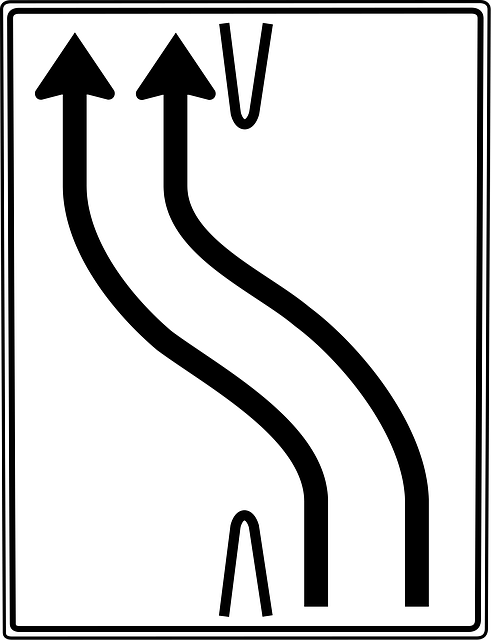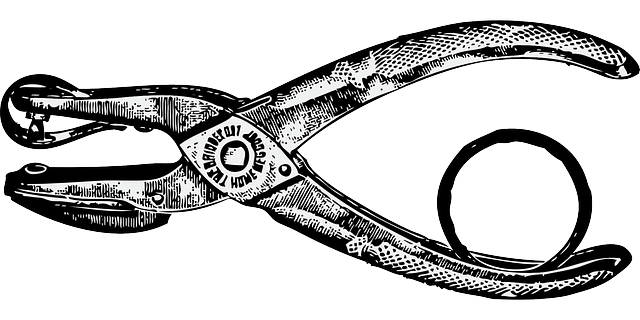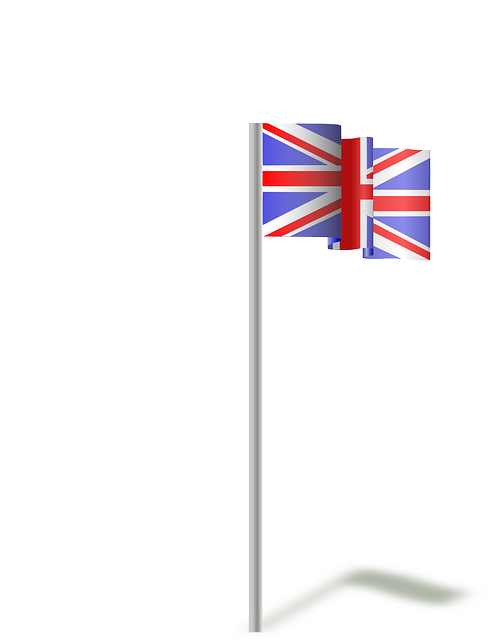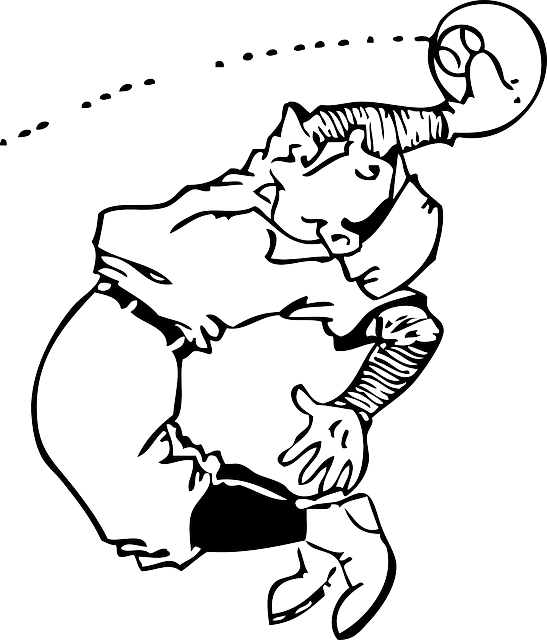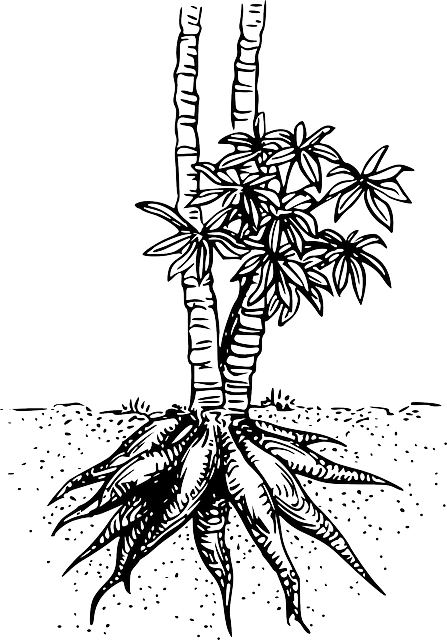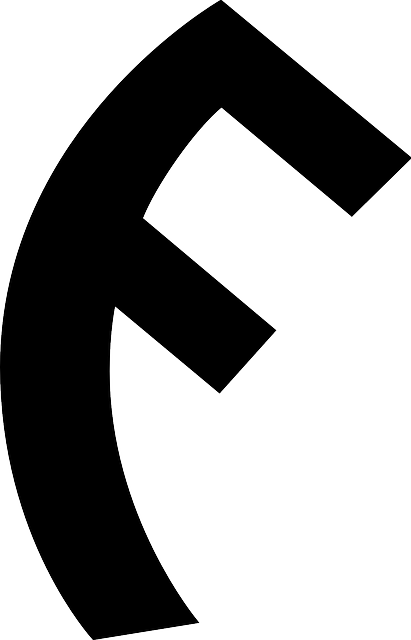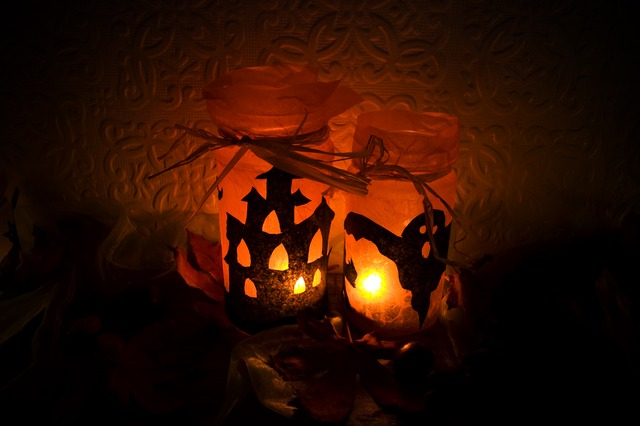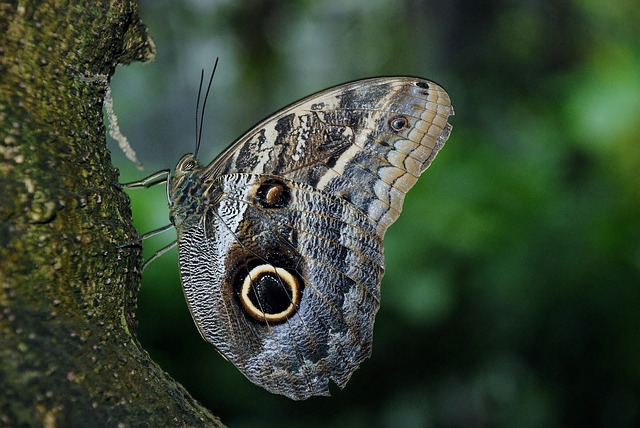الامبراطورية البرتغالية
|
الامبراطورية البرتغالية
Império Português
| |
|---|---|
الفهم
الدرع
| |
الشعار الحادي: Vis Unita Maior Nunc et Semper (باللاتينية) "الآن وإلى الأبد، سنكون الأعظم ونحن متحدون" | |
النشيد: O Hino da Carta (1834–1911)
A Portuguesa (1911–1999) | |
|
الامبراطورية الپرتغالية والأراضي التابعة لها.
| |
| العاصمة | لشبونة[1] |
| اللغات الرسمية | الپرتغالية |
| الحكومة | ملكية (1415–1910) جمهورية (1910–1999) |
• أول ملك |
خواوالأول |
• آخر ملك |
مانويل الثاني |
• أول رئيس |
مانويل ده أرياگا |
• آخر رئيس |
گورگه سامپايو |
|
التأسيس 1415
| |
• انظر الطرق إلى الهند |
1498 |
• اكتشاف البرازيل |
1500 |
• انتنطق المجلس الپرتغالي إلى البرازيل |
1807 |
• تحويل البرازيل إلى مملكة |
1815 |
• استقلال البرازيل |
1825 |
• الجمهورية |
1910 |
• خسارة المستعمرات الهندية |
1961 |
• استقلال المستعمرات الأفريقية |
1974/1975 |
• ) |
1999 |
• ) [2]
|
2002 |
1. كانت العاصمة تقع في ريودي جانيرومن 1808 حتى 1821. 2. عادة ما تعتبر مكاوآخر مستعمرة حيث لم يكن الغزوونتيجة الاحتلال الإندونيسي لتيمور الشرقية معترف به رسمياً من قبل البلدان الأخرى بالرغم من عملية انهاء الاستعمار البرتقغالي لتيمور الشرقية عام 1975. استقلال تيمور الشرقية عن إندونسيا عام 2002 أنهى السيادة البرتغالية المرصودة. | |
الامبراطورية البرتغالية كانت أول الامبراطوريات الاوروبية المعاصرة وأطولهن عمراً, فقد امتدت على مدى ستة قرون، من احتلال سبتة في 1415 إلى تسليم مكاوفي 1999.
بدأ المستكشفون البرتغاليون استكشاف ساحل أفريقيا في 1419، مستغلين أحدث التطورات في الملاحة، رسم الخرائط والتقنية البحرية مثل كراڤل caravel (مركب شراعي صغير)، لفهم ما إذا كان من الممكن العثور على طريق بحري إلى مصدر تجارة التوابل المربحة. وفي 1488، بارتولوميودياز لف حول رأس الراتى الصالح، وفي 1498، ڤاسكودا گاما وصل الهند. وفي 1500، بمصادفة الرسوعلى ساحل أمريكا الجنوبية كما يقول البعض، أوبتخطيط ملكي سري كما يدفع آخرون، عثر پدروألڤاريز كابرال على ما تطور ليصبح مستعمرة البرازيل. وعلى مر العقود التالية، واصل البحارة البرتغاليون استكشافهم لسواحل وجزر شرق آسيا، مدمرين القوى الإسلامية ومؤسسين قلاعاً ونقاط تجارة أينما حلوا. وبحلول عام 1571، أصبح هناك عقداً من الثغور يربط لشبونة بناگاساكي: وبذلك فقد أصبحت الامبراطورية حقاً عالمية، وفي أثناء تلك العملية ثروات هائلة تدفقت إلى البرتغال.
جزء من عن |
|---|
|
القديم
|
|
العصور الوسطى
|
|
الأفونسية
|
|
عصر الاكتشافات
|
|
Brigantine
|
|
الجمهورية الأولى
|
|
الجمهورية الثانية
|
|
الجمهورية الثالثة
|
|
Regions
|
| خط زمني |
| بوابة Portugal |
بداية الامبراطورية (1415-1494)
الحقبة الأولى (1415-1663)
جزء من عن |
|---|
|
القديم
|
|
العصور الوسطى
|
|
الأفونسية
|
|
عصر الاكتشافات
|
|
Brigantine
|
|
الجمهورية الأولى
|
|
الجمهورية الثانية
|
|
الجمهورية الثالثة
|
|
Regions
|
| خط زمني |
| بوابة Portugal |
على الرغم من حتى سبتة كانت مخيبة لآمال البرتغاليي، إلا أنه قد اتخذ القرار بالاحتفاظ بها أثناء الاستكشاف على امتداد الساحل الأفريقي المطل على المحيط الأطلسي. من الداعمين الرئيسيين لهذه السياسة، الإنفانته الدوم هنري الملاح، الذي اشهجر في سقوط سبتة، والذي تولى دوراً رائداً في تعزيز وتمويل الاستكشاف البحري البرتغالي حتى وفاته عام 1460. في ذلك الوقت، لم يكن الأوروپيون على دراية يعهدون ما أبعد من رأس بوجادوعلى الساحل الأفريقي. تمنى هنري حتى يعهد إلى أي مدى تمتد الأراضي الإسلامية في أفريقيا، وما إذا كان ممكنناً الوصول إلى آسيا عن طريق البحر، حيث يمكن عن طريقهما الوصول إلى مصدر تجارة التوابل المربحة ووربما لتوحيد القوى مع مملكة الكاهن يوحنا المسيحية الأسطورية التي كان يتردد أنها موجودة في مكان ما في "الهند الشرقية". تحت رعايته، سرعان ما تم الوصول إلى جزيرة مديرا الأطلسية (1419) والأزور (1427) وتم استوطانهما لإنتاج القمح وتصديره إلى البرتغال.
الرحلات الأولى للسواحل الأفريقية
خشية ما وراء رأس بوجادور، وما إذا كان ممكناً التراجع بعد عبوره، تم التغلب عليهما عام 1934 عندما تمكن أحد قباطنة الإنفناته هنري، گيل إيدنز، من الدوران حول رأس بوجادور. بمجرد التغلب على هذا الحاجز النفسي، أصبح من السهل التوغل أكثر على امتداد الساحل. عام 1443، الإنفانته دوم پدرو، شقيق هنري ولاحقاً الوصي على عرش المملكة، منحه حق احتكار الملاحة، الحرب والتجارة في الأراضي الواقعة إلى الجنوب من رأس بوجادور. لاحقاً سيتم فرض هذا الاحتكار بموجب المراسيم الپاپوية Dum Diversas (1452) وRomanus Pontifex (1455)، والتي تمنح البرتغال حق احتكار الأراضي المكتشفة مؤخراً. كان التقدم الكبير الذي سسارع من وتيرة هذا المشروع هوطرح الكراڤل في منتصف القرن 15، مركب شراعي صغير يمكنه الإبحار في مسار أقرب للريح عن أي سفينة أوروپية أخرى في ذلك الوقت. استخدام التقنية البحرية الجديدة، قاد البرتغاليون للمناطق الواقعة أقصى جنوب خطوط العرض التي لم يكن في مقدورهم الوصول إليها من قبل، بمعدل تقدم درجة واحدة سنوياً. تم بلوغ السنغال وشبه جزيرة الرأس الأخضر عام 1445.
تأسست أول محطة تجارية وراء البحار عام 1445 على جزيرة أرگين، قبالة ساحل موريتانيا، لجذب التجار المسلمين واحتكار التجارة في المسارات العابرة في شمال أفريقيا. عام 1445، توغل ألڤاروفرنانديز وصولاً إلى سيراليون وخليج غينيا المعاصر حيث بلغهما في ستينيات القرن الخامس عشر. تم اكتشاف جزر الرأس الأخضر عام 1456 وتم استيطانهم عام 1462.
بدأ التوسع في زراعة قصب السكر في ماديرا عام 1455، باستخدام مستشارين من صقلية و(بشكل أكبر) من العاصمة الجنوية لإنتاج "الملح الحلو" النادر في أوروپا. كان قصب السكر يستغرس بالعمل في الغرب البرتغالي، لكن سهولة الوصول إلى ماديرا اجتذبت التجار الجنويين والفلمنكيين الحرصيين على تجاوز الاحتكار البندقي. كان يتم استخدام العبيد، وبحلول القرن 16 بلغت نسبة العبيد المستقدمين إلى ماديرا 10% من إجمالي تعداد السكان. بحلول عام 1480 كان لأنتوِرپ سبعين سفينة تعمل في تجارة السكر بماديرا، وكان تكرير وتوزيع السكر متمركزاً في أنتوِرپ. بحلول تسعينيات القرن الخامس عشر، كانت ماديرا قد تفوقت على قبرص كمنتج للسكر. كان نجاح تجار السكر مثل بارتولوميومارخيوني من شأنها حتى يدفع بالاستثمارات في الرحلات المستقبلية.
عام 1469، بعد وفاة الأمير هنري ونتيجة للعوائد الضئيلة الناتجة عن الاستكشافات الأفرقية، منح الملك أفونسوالخامس حق احتكار التجارة في مناطق من خليج غينيا للتاجر فرناوگوميز. گوميز، الذي كان عليه استكشاف 100 ميلs (160 kم) من الساحل سنوياً لخمس سنوات، اكتشف جزر خليج غينيا، وتضم ساوتومى وپرنسيپى وعثر على تجارة المضى الغرينية المزهدرة بين السكان الأصليين والتجار العرب والأمازيغ الزائرين عند ميناء سُمي لاحقاً مينا (المنجم)، حيث أسس محطة تجارة.تزايدت التجارة بين إلمينا والبرتغال على مدار عقد من الزمان. عام 1481، الملك المتوج مؤخراً، خواوالثاني، قرر بناء ساوخورخه دا مينا لضمان حماية هذه التجارة، والتي أصبحت مرة أخرى احتكاراً ملكياً. تم اجتياز خط الاستواء بواسطة ملاحين تحت رعاية فرناوگوميز عام 1473 ونهر الكونغوبواسطة ديوگوتشاوعام 1482. أثناء هذه الحملة تقابل البرتغاليون أولاً مع مملكة الكونغو، التي سرعان ما تم تنمية العلاقات معها. أثناء حملته 1485-86، واصل تشاووصولاً إلى راس الصليب، في نامبيا المعاصرة، بالقرب من حتى مدار الجدي.
عام 1488، دار بارتولوميودياز حول رأس الراتى الصالح على الحافة الجنوبية لأفريقيا، مثبتاً خطأ وجهة النظر التي كانت موجودة منذ عهد بطليموس والتي تقول بأن المحيط الهندي هوأرض حبيسة. في الوقت نفسه، سافر پيرودا كوڤيها سراً على البر، ووصل إلى إثيوپيا، مقترحاً حتى المسار البحري المؤدي إلى الهند الشرقية سيظهر قريباً.
باستكشاف البرتغاليين للسواحل الأفريقية، هجروا خلفهم سلسلة من الپادراوات، الصلبان الحجرية المنقوشة مع شعار النبالة البرتغالي التي تشير إلى الأراضي التي استحوذوعليها، وقاموا ببناء الحصون والمحطات التجارية. انطلاقاً من هذه القواعد، شاركوا في تجارة الرقيق والمضى المربحتين. تمتعت البرتغال باحتكار عملي لتجارة الرقيق الأفارقة المنقولين بحراً منذ أكثر من قرن، حيث كانت تستورد حوالي 800 عبد سنوياً. تم إحضار معظمهم إلى العاصمة البرتغالية لشبونة، حيث كان الأفارقة السود يشكلون 10% من تعداد السكان.
معاهدة توردسيلاس (1494)
رحب الملك والملكة بكولومبس في برشلونة وعاش في البلاط ستة شهور وانعم عليه بلقب "أمير البحر الأوقيانوس ويقصد به الأطلنطي غرب شواطئ الآزور". ونصب حاكما على العالم الجديد أوكما وصف نفسه "نائب الملك وحاكم عام الجزر وأراضي آسيا والهند". وعندما شاع حتى جون الثاني يجهز أسطولا لعبور الأطلنطي استغاث فرديناند بالبابا ألكسندر السادس. وطلب منه حتى يحدد حقوق أسبانيا في "البحر الأوقيانوس" فعين البابا الأسباني، في سلسلة من المنشورات (1493) لأسبانيا ملكية جميع الأراضي التي لا تدين بالمسيحية في الغرب، وللبرتغال جميع الأراضي في الشرق ويفصل بينهما خط وهمي مرسوم بحيث يمر من الشمال إلى الجنوب على بعد 270 ميلا غرب الأزور وجز الرأس الخضراء ولكن البرتغاليين رفضوا قبول هذا الخط الفاصل وأوشكت الحرب حتى تنشب بين الحكومتين المتنافستين لولا أنهما وافقتا في معاهدة تورديسيلاس (7 يونية سنة 1494) على حتى يمر ذلك الخط موازيا لخط الزوال الطولي على بعد 250 فرسخا غرب جزر الرأس الخضراء بالنسبة للاكتشافات التي تمت قبل ذلك التاريخ، ولكن على بعد 370 فرسخا غربا بالنسبة للاكتشافات التي تتم بعد ذلك.(يقع الطرف الشرقي للبرازيل شرق هذا الخط الثاني) وقد أطلقت منشورات پييتروشهيد أنگييرا Peter Martyr d'Anghiera رأى كولمبس بأنه قد وصل إلى آسيا واستمر هذا الوهم حتى طاف ماجلان حول الكرة الأرضية.
البرتغاليون يدخلون المحيط الهندي
غادر سرب ڤاسكودا گاما البرتغال عام 1487، وقام بالالتفاف حول الرأس واستمر على امتداد ساحل شرق أفريقيا، حيث تم الاستعانة بدليل محلي على متن السفينة لتوجييهم لعبور المحيط الهندي، ووصلوا إلى كاليكت (عاصمة المملكة الأصلية تحت حكم الزامورين (كما تعهد هذه المدينة باسم كوژيكوده) في جنوب غرب الهند في مايو1498. خرجت الرحلة الثانية إلى الهند عام 1500 تحت قيادة پدروألڤارس كابرال. أثناء اتباعها نفس المسار الجنوبي الغربي الذي اتبعه گاما لعبور المحيط الأطلسي، قام كابرال بالإبرار على الساحل البرازيلي. كان هذا اكتشافاً عرضياً محتملاً، لكن كانت هناك تكهنات بأن البرتغاليين كانوعلى فهم بوجود البرازيل وأنها تقع على جانبهم من خط توردسيلاس. أوصى كابرال الملك البرتغالي بوجوب استيطان هذه الأرض، وتم ارسال رحلتين تاليتين عام 1501 و1503. تم العثور على الأراضي التي كانت وفيرة pau-brasil، أوالخشب البرازيلي، الذي اشتقت منه اسمها لاحقاً، لكن الفشل في العثور على المضى والفضى كان يعني حتى جهود البرتغاليين كانت مهجرزة على الهند. عام 1502، لبسط احتكارها التجاري على مساحة واسعة من المحيط الهندي، أسست الامبراطورية البرتغالية نظام تراخيص يسمى بالكارتاز، والذي يمنح السفن التجارية الحماية من القراصنة والدول المنافسة.
الاستفادة من التنافس بين حكم كوتشي وزامورين كاليكت، استقبل البرتغاليين بحفاوة واعتبروا حلفاء، حيث حصلوا على تصريح ببناء (حصن كوتشي) والمحطة التجارية التي كانت أول مستوطنة أوروپية في الهند. أسسوا مركزاً تجارياً في مدينة تانگاسري، كويلون (كولام) (1503) عام 1502، والتي أصبحت مركزاً لتجارة الفلفل الأسود، وبعد تأسيس مصانع في كوتشين (كوتشيم، كوتشي) وكاننور (كانونور، كانور)، تم بناء مصنعاً في كويلون عام 1503. عام 1505 قام الملك مانوِل الأول من الپرتغال بتعيين فرانسسكودي ألميدا نائب أول للملك في الهند البرتغالية، مؤسساً حكومة برتغالية في الشرق. في تلك السنة قامت البرتغال أيضاً بغزوكاننور، حيث أسست حصن سانت أنگلو، ووصل لورنسودا ألميدا سيلان (سريلانكا المعاصرة)، حيث اكتشف مصدر القرفة. بالرغم من المقاومة المبدئية التي أظهرها كانكيلي الأول من جافنا في التواصل معهم، إلا حتى مملكة جافنا قد لفت انتباه المسؤولين البرتغاليين بعد فترة وجيزة لمقاومتهم للأنشطة التبشيرية وكذلك لأسباب لوجستية بسبب قربها من ميناء ترنكومالي وأسباب أخرى. في العام نفسه، أمر مانوِل الأول ألميدا بتحصين الحصون البرتغالية في كرلا وشرق أفريقيا، فضلاً عن التحقق في احتمالات بناء الحصون في سريلانكا ومالاكا رداً على تزايد الأعمال العدائية من المسلمين داخل تلك المناطق وتهديدات السلطان المملوكي.
قام الأسطول البرتغالي تحت قيادة تريستان دا كونيا وأفونسودي ألبوكرك بغزوسقطرى عند مدخل البحر الأحمر عام 1506 ومسقط عام 1507. بعد فشلهم في غزوهرمز، اتبعوا استراتيجية تهدف إلى منع التجارة القادمة من المحيط الهندي. قام كونيا باستكشاف مدغشقر جزئياً، واكتشفت موريشيوس من قبل كونيا ويحتمل حتى ألبوكرك كان مرافقاً له. بعد الاستيلاء على سقطرى، عمل كونيا وألبوكرك بشكل منفصل. بينما سافر كونيا إلى الهند والبرتغال لأغراض تجارية، مضى ألبوكرك إلى الهند لكون حاكماً بعد انتهاء فترة ولاية ألميدا التي امتدت لثلاث سنوات. رفض ألميدا التخلي عن السلطة وسرعان ما وضعه ألبوكرك قيد الإقامة الجبرية في منزله، حيث ظل حتى عام 1509.
بالرغم من طلب مانوِل الأول بمزيد من الاستكشاف للمصالح البرتغالية في ملقة وسريلانكا، إلا حتى ألميدا قد ركز على غرب الهند، وخاصة في سلطنة گجرات بسبب شكوكه في حتى تجار المنطقة يمتلكون سلطات أكبر. قام السلطان المملوكي الأشرف قنصوة الغوري وسلطان گجرات بمهاجمة القوات البرتغالية في ميناء چاول، مما أسفر عن وفاة ابن ألميدا. انتقاماً لذلك، قاتل ودمر البرتغاليون الأسطول المملوكي والگجراتي في معكرة ديوالبحرية عام 1509.
في ظل محاولات ألميدا المبدئية، حاول مانوِل الأول ومجلسه في لشبونة توزيع السلطة في المحيط الهندي، مؤسسين ثلاث مناطق نفوذ: أٌرسل ألبوكرك إلى البحر الأحمر، ديوگولوپيز دى سكويرا إلى جنوب شرق آسيا، سعياً لاتفاقية مع سلطان ملقا، وأُرسل خورخه دى أگيار تبعه دورتى دا لـِموس إلى المنطقة الواقعة بين رأس الراتى الصالح وگجرات . إلا حتى هذه السيطرة على هذه المناطق كانت مركزية تحت سلطة ألبوكرك بعد خلافته وظلت كذلك في الحكم اللاحق.
التجارة مع آسيا البحرية وأفريقيا والمحيط الهندي
گوا وملقا وجنوب شرق آسيا
By the end of 1509, Albuquerque became viceroy of the Portuguese India. In contrast to Almeida, Albuquerque was more concerned with strengthening the navy, as well as being more compliant with the interests of the kingdom. His first objective was to conquer Goa, due to its strategic location as a defensive fort positioned between Kerala and Gujarat, as well as its prominence for Arabian horse imports.
The initial capture of Goa from the Bijapur sultanate in 1510 was soon countered by the Bijapuris, but with the help of Hindu privateer Timoji, on November 25 of the same year it was recaptured. In Goa, Albuquerque began the first Portuguese mint in India in 1510. He encouraged Portuguese settlers to marry local women, built a church in honor of St. Catherine (as it was recaptured on her feast day), and attempted to build rapport with the Hindus by protecting their temples and reducing their tax requirements. The Portuguese maintained friendly relations with the south Indian Emperors of the Vijayanagara Empire.
In April 1511 Albuquerque sailed to Malacca in Malaysia, the largest spice market of the period. Though the trade was largely dominated by the Gujurati, other groups such as the Turks, Persians, Armenians, Tamils and Abyssinians traded there. Albuquerque targeted Malacca to impede the Muslim and Venetian influence in the spice trade and increase that of Lisbon. By July 1511, Albuquerque had captured Malacca and sent Antonio de Abreu and Francisco Serrão (along with Ferdinand Magellan) to explore the Indonesian archipelago.
The Malacca peninsula became the strategic base for Portuguese trade expansion with China and Southeast Asia. A strong gate, called the A Famosa, was erected to defend the city and still remains. Learning of Siamese ambitions over Malacca, Albuquerque immediately sent Duarte Fernandes on a diplomatic mission to the Kingdom of Siam (modern Thailand), where he was the first European to arrive, establishing amicable relations and trade between both kingdoms.
The Portuguese empire pushed further south and proceeded to discover Timor in 1512. Jorge de Meneses discovered New Guinea in 1526, naming it the "Island of the Papua". In 1517, João da Silveira commanded a fleet to Chittagong, and by 1528, the Portuguese had established a settlement in Chittagong. The Portuguese eventually based their center of operations along the Hugli River, where they encountered Muslims, Hindus, and Portuguese deserters known as Chatins.
الصين واليابان
Jorge Alvares was the first European to reach China by sea, while the Romans were the first overland via Asia Minor. He was also the first European to discover Hong Kong. In 1514, Afonso de Albuquerque, the Viceroy of the Estado da India, dispatched Italian Rafael Perestrello to sail to China in order to pioneer European trade relations with the nation.
In spite of initial harmony and excitement between the two cultures, difficulties began to arise shortly afterwards, including misunderstanding, bigotry, and even hostility. The Portuguese explorer Simão de Andrade incited poor relations with China due to his pirate activities, raiding Chinese shipping, attacking a Chinese official, and kidnappings of Chinese. He based himself at Tamao island in a fort. The Chinese claimed that Simão kidnapped Chinese boys and girls to be molested and cannibalized. The Chinese sent a squadron of junks against Portuguese caravels that succeeded in driving the Portuguese away and reclaiming Tamao. As a result, the Chinese posted an edict banning men with caucasian features from entering Canton, killing multiple Portuguese there, and driving the Portuguese back to sea.
After the Sultan of Bintan detained several Portuguese under Tomás Pires, the Chinese then executed 23 Portuguese and threw the rest into prison where they resided in squalid, sometimes fatal conditions. The Chinese then massacred Portuguese who resided at Ningbo and Fujian trading posts in 1545 and 1549, due to extensive and damaging raids by the Portuguese along the coast, which irritated the Chinese. Portuguese pirating was second to Japanese pirating by this period. However, they soon began to shield Chinese junks and a cautious trade began. In 1557 the Chinese authorities allowed the Portuguese to settle in Macau, creating a warehouse in the trade of goods between China, Japan, Goa and Europe.
جزر التوابل (الملوك) ومعاهدة سرقسطة
Portuguese operations in Asia did not go unnoticed, and in 1521 Magellan arrived in the region and claimed the Philippines for Spain. In 1525, Spain under Charles V sent an expedition to colonize the Moluccas islands, claiming they were in his zone of the Treaty of Tordesillas, since there was no set limit to the east. The expedition of García Jofre de Loaísa reached the Moluccas, docking at Tidore. With the Portuguese already established in nearby Ternate, conflict was inevitable, leading to nearly a decade of skirmishes. A resolution was reached with the Treaty of Zaragoza in 1529, attributing the Moluccas to Portugal and the Philippines to Spain.
جنوب آسيا والخليج العربي والبحر الأحمر
The Portuguese empire expanded into the Persian Gulf, contesting control of the spice trade with the Ajuran Empire and the Ottoman Empire. In 1515, Afonso de Albuquerque conquered the Huwala state of Hormuz at the head of the Persian Gulf, establishing it as a vassal state. Aden, however, resisted Albuquerque's expedition in that same year and another attempt by Albuquerque's successor Lopo Soares de Albergaria in 1516. In 1521 a force led by António Correia captured Bahrain, defeating the Jabrid King, Muqrin ibn Zamil. In a shifting series of alliances, the Portuguese dominated much of the southern Persian Gulf for the next hundred years. With the regular maritime route linking Lisbon to Goa since 1497, the island of Mozambique became a strategic port, and there was built Fort São Sebastião and a hospital. In the Azores, the Islands Armada protected the ships en route to Lisbon.
In 1534, Gujarat faced attack from the Mughals and the Rajput states of Chitor and Mandu. The Sultan Bahadur Shah of Gujarat was forced to sign the Treaty of Bassein with the Portuguese, establishing an alliance to regain the country, giving in exchange Daman, Diu, Mumbai and Bassein. It also regulated the trade of Gujarati ships departing to the Red Sea and passing through Bassein to pay duties and allow the horse trade. After Mughal ruler Humayun had success against Bahadur, the latter signed another treaty with the Portuguese to confirm the provisions and allowed the fort to be built in Diu. Shortly afterward, Humayun turned his attention elsewhere, and the Gujarats allied with the Ottomans to regain control of Diu and lay siege to the fort. The two failed sieges of 1538 and 1546 put an end to Ottoman ambitions, confirming the Portuguese hegemony in the region, as well as gaining superiority over the Mughals. However, the Ottomans fought off attacks from the Portuguese in the Red Sea and in the Sinai Peninsula in 1541, and in the northern region of the Persian Gulf in 1546 and 1552. Each entity ultimately had to respect the sphere of influence of the other, albeit unofficially.
أفريقيا جنوب الصحراء
After a series of prolonged contacts with Ethiopia, the Portuguese embassy made contact with the Ethiopian (Abyssinian) Kingdom led by Rodrigo de Lima in 1520. This coincided with the Portuguese search for Prester John, as they soon associated the kingdom as his land. The fear of Turkish advances within the Portuguese and Ethiopian sectors also played a role in their alliance. The Adal Sultanate defeated the Ethiopians in the battle of Shimbra Kure in 1529, and Islam spread further in the region. Portugal responded by aiding king Gelawdewos with Portuguese soldiers and muskets. Though the Ottomans responded with support of soldiers and muskets to the Adal Sultanate, after the death of the Adali sultan Ahmad ibn Ibrahim al-Ghazi in the battle of Wayna Daga in 1543, the joint Adal-Ottoman force retreated.
The Portuguese also made direct contact with the Kongolose vassal state Ndongo and its ruler Ngola Kiljuane in 1520, after the latter requested missionaries. Kongolese king Afonso I interfered with the process with denunciations, and later sent a Kongo mission to Ndongo after the latter had arrested the Portuguese mission that came. The growing official and unofficial slave trading with Ndongo strained relations between Kongo and the Portuguese, and even had Portuguese ambassadors from Sao Tome support Ndongo against the Kingdom of Kongo. However, when the Jaga attacked and conquered regions of Kongo in 1568, Portuguese assisted Kongo in their defeat. In response, the Kongo allowed the colonization of Luanda Island; Luanda was established by Paulo Dias de Novais in 1576 and soon became a slave port. De Novais' subsequent alliance with Ndongo angered Luso-Africans who resented the influence from the Crown. In 1579, Ndongo ruler Ngola Kiluanje kia Ndamdi massacred Portuguese and Kongolese residents in the Ndongo capital Kabasa under the influence of Portuguese renegades. Both the Portuguese and Kongo fought against Ndongo, and off-and-on warfare between the Ndongo and Portugal would persist for decades.
التجريدات التبشيرية
In 1542, Jesuit missionary Francis Xavier arrived in Goa at the service of King John III of Portugal, in charge of an Apostolic Nunciature. At the same time Francisco Zeimoto, António Mota, and other traders arrived in Japan for the first time. According to Fernão Mendes Pinto, who claimed to be in this journey, they arrived at Tanegashima, where the locals were impressed by firearms, that would be immediately made by the Japanese on a large scale. By 1570 the Portuguese bought part of a Japanese port where they founded a small part of the city of Nagasaki, and it became the major trading port in Japan in the triangular trade with China and Europe.
The Portuguese were soundly defeated in their attempt to capture wealthy Somali harbor cities on the Somali coast such as Mogadishu, Merca, Barawa, Kismayo and Hobyo by the powerful Somalis of the Ajuran Empire during the Battle of Barawa and Battle of Benadir.
Guarding its trade from both European and Asian competitors, Portugal dominated not only the trade between Asia and Europe, but also much of the trade between different regions of Asia and Africa, such as India, Indonesia, China, and Japan. Jesuit missionaries, followed the Portuguese to spread Roman Catholicism to Asia and Africa with mixed success.
الجهود الاستعمارية في الأمريكتين
كندا
Based on the Treaty of Tordesillas, the Portuguese Crown, under the kings Manuel I, John III and Sebastian, also claimed territorial rights in North America (reached by John Cabot in 1497 and 1498). To that end, in 1499 and 1500, João Fernandes Lavrador explored Greenland and the north Atlantic coast of Canada, which accounts for the appearance of "Labrador" on topographical maps of the period. Subsequently, in 1500–1501 and 1502, the brothers Gaspar and Miguel Corte-Real explored what is today the Canadian province of Newfoundland and Labrador, and Greenland, claiming these lands for Portugal. In 1506, King Manuel I created taxes for the cod fisheries in Newfoundland waters. Around 1521, João Álvares Fagundes was granted donatary rights to the inner islands of the Gulf of St. Lawrence and also created a settlement on Cape Breton Island to serve as a base for cod fishing. Pressure from natives and competing European fisheries prevented a permanent establishment and was abandoned five years later. Several attempts to establish settlements in Newfoundland over the next half-century also failed.
البرازيل
Within a few years after Cabral arrived from Brazil, competition came along from France. In 1503, an expedition under the command of Gonçalo Coelho reported French raids on the Brazilian coasts, and explorer Binot Paulmier de Gonneville traded for brazilwood after making contact in southern Brazil a year later. Expeditions sponsored by Francis I along the North American coast directly violated of the Treaty of Tordesilhas. By 1531, the French had stationed a trading post off of an island on the Brazilian coast.
The increase in brazilwood smuggling from the French led João III to press an effort to establish effective occupation of the territory. In 1531, a royal expedition led by Martim Afonso de Sousa and his brother Pero Lopes went to patrol the whole Brazilian coast, banish the French, and create some of the first colonial towns—among them São Vicente, in 1532. Sousa returned to Lisbon a year later to become governor of India and never returned to Brazil. The French attacks did cease to an extent after retaliation led to the Portuguese paying the French to stop attacking Portuguese ships throughout the Atlantic, but the attacks would continue to be a problem well into the 1560s.
Upon de Sousa's arrival and success, fifteen latitudinal tracts, theoretically to span from the coast to the Tordesillas limit, were decreed by João III on 28 September 1532. The plot of the lands formed as a hereditary captaincies (Capitanias Hereditárias) to grantees rich enough to support settlement, as had been done successfully in Madeira and Cape Verde islands. Each captain-major was to build settlements, grant allotments and administer justice, being responsible for developing and taking the costs of colonization, although not being the owner: he could transmit it to offspring, but not sell it. Twelve recipients came from Portuguese gentry who become prominent in Africa and India and senior officials of the court, such as João de Barros.
Of the fifteen original captaincies, only two, Pernambuco and São Vicente, prospered. Both were dedicated to the crop of sugar cane, and the settlers managed to maintain alliances with Native Americans. The rise of the sugar industry came about because the Crown took the easiest sources of profit (brazilwood, spices, etc.), leaving settlers to come up with new revenue sources. The establishment of the sugar cane industry demanded intensive labor that would be met with Native American and, later, African slaves. Deeming the capitanias system ineffective, João III decided to centralize the government of the colony in order to "give help and assistance" to grantees. In 1548 he created the first General Government, sending in Tomé de Sousa as first governor and selecting a capital at the Bay of All Saints, making it at the Captaincy of Bahia.
Tomé de Sousa built the capital of Brazil, Salvador, at the Bay of All Saints in 1549. Among de Sousa's 1000 man expedition were soldiers, workers, and six Jesuits led by Manuel da Nóbrega. The Jesuits would have an essential role in the colonization of Brazil, including São Vicente, and São Paulo, the latter which Nóbrega co-founded. Along with the Jesuit missions later came disease among the natives, among them plague and smallpox. Subsequently, the French would resettle in Portuguese territory at Guanabara Bay, which would be called France Antarctique. While a Portuguese ambassador was sent to Paris to report the French intrusion, Joao III appointed Mem de Sá as new Brazilian governor general, and Sá left for Brazil in 1557. By 1560, Sá and his forces had expelled the combined Huguenot, Scottish Calvinist, and slave forces from France Antarctique, but left survivors after burning their fortifications and villages. These survivors would settle Gloria Bay, Flamengo Beach, and Parapapuã with the assistance of the Tamoio natives.
The Tamoio had been allied with the French since the settlement of France Antarctique, and despite the French loss in 1560, the Tamoio were still a threat. They launched two attacks in 1561 and 1564 (the latter event was assisting the French), and were nearly successful with each. By this time period, Manuel de Nóbrega, along with fellow Jesuit José de Anchieta, took part as members of attacks on the Tamoios and as spies for their resources. From 1565 through 1567 Mem de Sá and his forces eventually destroyed France Antarctique at Guanabara Bay. He and his nephew, Estácio de Sá, then established the city of Rio de Janeiro in 1567, after Mem de Sá proclaimed the area "São Sebastião do Rio de Janeiro" in 1565. By 1575, the Tamoios had been subdued and essentially were extinct, and by 1580 the government became more of a ouvidor general rather than the ouvidores.
الاتحاد الأيبيري والمنافسة الپروتستانتية والتفشي الاستعماري (1580–1663)
In 1580, King Philip II of Spain invaded Portugal after a crisis of succession brought about by King Sebastian of Portugal's death during a disastrous Portuguese attack on Alcácer Quibir in Morocco in 1578. At the Cortes of Tomar in 1581, Philip was crowned Philip I of Portugal, uniting the two crowns and overseas empires under Spanish Habsburg rule in a dynastic Iberian Union. At Tomar, Philip promised to keep the empires legally distinct, leaving the administration of the Portuguese Empire to Portuguese nationals, with a Viceroy of Portugal in Lisbon seeing to his interests. Philip even had the capital moved to Lisbon for a two-year period (1581–83) due to it being the most important city in the Iberian peninsula. All the Portuguese colonies accepted the new state of affairs except for the Azores, which held out for António, a Portuguese rival claimant to the throne who had garnered the support of Catherine de Medici of France in exchange for the promise to cede Brazil. Spanish forces eventually captured the islands in 1583.
The Tordesillas boundary between Spanish and Portuguese control in South America was then increasingly ignored by the Portuguese, who pressed beyond it into the heart of Brazil, allowing them to expand the territory to the west. Exploratory missions were carried out both ordered by the government, the "entradas" (entries), and by private initiative, the "bandeiras" (flags), by the "bandeirantes". These expeditions lasted for years venturing into unmapped regions, initially to capture natives and force them into slavery, and later focusing on finding gold, silver and diamond mines.
However, the union meant that Spain dragged Portugal into its conflicts with England, France and the Dutch Republic, countries which were beginning to establish their own overseas empires. The primary threat came from the Dutch, who had been engaged in a struggle for independence against Spain since 1568. In 1581, the Seven Provinces gained independence from the Habsburg rule, leading Philip II to prohibit commerce with Dutch ships, including in Brazil where Dutch had invested large sums in financing sugar production.
Spanish imperial trade networks now were opened to Portuguese merchants, which was particularly lucrative for Portuguese slave traders who could now sell slaves in Spanish America at a higher price than could be fetched in Brazil. In addition to this newly acquired access to the Spanish asientos, the Portuguese were able to solve their bullion shortage issues with access to the production of the silver mining in Peru and Mexico.Manila was also incorporated into the Macau-Nagasaki trading network, allowing Macanese of Portuguese descent to act as trading agents for Philippine Spaniards and use Spanish silver from the Americas in trade with China, and they later drew competition with the Dutch East India Company.
In 1592, during the war with Spain, an English fleet captured a large Portuguese carrack off the Azores, the Madre de Deus, which was loaded with 900 tons of merchandise from India and China estimated at half a million pounds (nearly half the size of English Treasury at the time). This foretaste of the riches of the East galvanized English interest in the region. That same year, Cornelis de Houtman was sent by Dutch merchants to Lisbon, to gather as much information as he could about the Spice Islands.
The Dutch eventually realized the importance of Goa in breaking up the Portuguese empire in Asia. In 1583, merchant and explorer Jan Huyghen van Linschoten (1563 –ثمانية February 1611), formerly the Dutch secretary of the Archbishop of Goa, had acquired information while serving in that position that contained the location of secret Portuguese trade routes throughout Asia, including those to the East Indies and Japan. It was published in 1595; the text was then included in the larger volume published in 1596 under the title "Itinerario: voyage, ofte schipvaert van Jan Huygen van Linschoten naer Oost ofte Portugaels Indien, 1579–1592, Volume 2, Issue 2, by Jan Huygen van Linschoten, Linschoten-Vereeniging (Hague, Netherlands)". Dutch and English interests used this new information, leading to their commercial expansion, including the foundation of the English East India Company in 1600, and the Dutch East India Company in 1602. These developments allowed the entry of chartered companies into the East Indies.
The Dutch took their fight overseas, attacking Spanish and Portuguese colonies and beginning the Dutch–Portuguese War, which would last for over sixty years (1602–1663). Other European nations, such as Protestant England, assisted the Dutch Empire in the war. The Dutch attained victories in Asia and Africa with assistance of various indigenous allies, eventually wrenching control of Malacca, Ceylon, and São Jorge da Mina. The Dutch also had regional control of the lucrative sugar-producing region of northeast Brazil as well as Luanda, but the Portuguese regained these territories after considerable struggle.
Meanwhile, in the Arabian Peninsula, the Portuguese also lost control of هرمز by a joint alliance of the Safavids and the English in 1622, and Oman under the Al-Ya'arubs would capture Muscat in 1650. They would continue to use Muscat as a base for repetitive incursions within the Indian Ocean, including capturing Fort Jesus in 1698. In Ethiopia and Japan in the 1630s, the ousting of missionaries by local leaders severed influence in the respective regions.
الامبراطورية في عزها (1494-1580)
في شرق أفريقيا، الدويلات الإسلامية على ساحل موزمبيق، كيلوة، براوة، سفالى وممباسا تم تدميرهم، أوأصبحوا تابعين أوحلفاء للبرتغال. پيرودا كوڤيليا وصل إلى إثيوپيا، مسافراً سراً، سنة 1490؛ بعثة دبلوماسية وصلت حاكم هذه الدولة في 19 اكتوبر، 1520. المستكشف پدروألڤاريز كابرال، في 22 أبريل، 1500، رسى بمراكبه فيما يسمى اليوم پورتوسيگورو، البرازيل وأقام نقاط تجارة مؤقتة ليجمع خشب البرازيل، المستخدم في الصباغة. وفي بحر العرب، سقطرى تم احتلالها في 1506، وفي نفس السنة لورنسودالميدا زار سيلان (انظر سيلان البرتغالية). وفي المحيط الهندي، اكتشفت أحد سفن پدروألڤاريز كابرال مدغشقر، والتي كان قد اكتشفها جزئياً تريستاودا كونيا وفي 1507، نفس السنة تم اكتشاف موريشيوس. وفي 1509، انتصر البرتغاليون في معركة ديوالبحرية ضد الأساطيل المشهجرة لسلطان مصر والسلطان العثماني بايزيد الثاني، سلطان گوجرات، والراجا الساموثيري لكـُجيكـُده، الجمهورية البندقية، والجمهورية الراگوسية (دوبروڤنيك). معركة ديوالثانية في 1538 أخيراً أنهت الطموحات العثمانية في الهند وأكدت الهيمنة البرتغالية في المحيط الهندي.
أسست البرتغال موانئ تجارية في أماكن نائية مثل گوا، هرمز، ملقا، كوتشي، جزر مالوكو، مكاو، وناگاساكي. وبحماية تجارتها من المنافسين الاوروبيين والآسيويين، فقد سيطرت البرتغال ليس فقط على التجارة بين آسيا واوروبا, بل أيضاً على معظم التجارة بين مختلف مناطق آسيا، مثل الهند، إندونسيا، الصين، واليابان. مبشروالجزويت، مثل الباسكي فرانسيس خاڤيير، ساروا خلف البرتغاليين لنشر المسيحية الكاثوليكية الرومانية في آسيا بدرجات مختلفة من النجاح.
وبينما كانت السفن البرتغالية تجوب موانئ آسيا وأمريكا الجنوبية، فقد منح الملك مانويل الأول إذناً باستكشاف شمال الأطلنطي لخواوفرنانديز "لاڤرادور" في 1499 (إلا أنه كان قد اكتشف بالعمل بعض الأراضي عام 1492، كما توحي احدى الرسائل من پيرودي بارسلوس) and إلى الأخوان كورته-ريال في 1500 و1501. لاڤرادور أعاد اكتشاف گرينلاند وغالباً فقد اكتشف لابرادور (المسماة على اسمه) وميگل وگاسپر كورته-ريال اكتشفوا نيوفاوندلاند ولابرادور، ومن المحتمل معظم, إذا لم يكن كل، الساحل الشرقي لجزيرة بافين. وفي 1516 اكتشف خواوألڤاريز فاگوندس الطرف الشمالي لنوڤا سكوتشيا ووالجزر من ساحلها إلى الساحل الجنوبي لنيوفاوندلاند. وفي 1521 حصل فاگوندس على لقب القبطانية لكل الأراضي التي يكتشفها وتفويض ببناء مستعمرة. وتم تمييز حيازاته عن أراضي كورته-ريال. فعائلة كورته-ريال, التي امتلكت اللوردية على تـِرّا نوڤا حاولت أيضاً استعمارها. وفي 1567 أوفد مانويل كورته-ريال ثلاثة سفن لاستعمار أراضيه في أمريكا الشمالية. المستعمرة في كيپ بريتون (حيازة فاگوندس) ظلت تـُذكر حتى سنة 1570 وآخر تأكيد لصك لوردية تـِرّا نوڤا صدر في 1579 من الملك هنري لڤاسكوأنـِّس كورته-ريال, ابن مانويل (وهوغير شقيق لگاسپر وميگل, وإن حمل نفس الاسم). الاهتمام بأمريكا الشمالية خفت إذ حتى الممتلكات الأفريقية والآسيوية كانت أكثر ثراءً كما حتى الاتحاد الشخصي للبرتغال واسبانيا من الممكنقد يكون السبب وراء نهاية المستعمرات البرتغاليةفي أمريكا الشمالية. وبحلول عام 2008, فلم يعثر على أي أثر لأي مستعمرة برتغالية في أمريكا الشمالية.
وفي 1578, عبر الصليبيون البرتغاليون البحر إلى المغرب وطردهم أحمد محمد من فاس, في معركة القصر الكبير والتي تـُعهد ايضاً باسم "معركة الملوك الثلاث". الملك سباستيان من الپرتغال قـُتل في المعركة (غالباً) أواُعدم بعدها مباشرة. التاج سـُلّم إلى عمه هنري من البرتغال إلا أنه توفي في 1580 بدون ورثة. الملك فيليپ الثاني من اسبانيا الذي كان أحد أقرب المطالبين بالعرش, غزا البرتغال بقواته ونـُصـِّب ملكاً على البرتغال من قِبل Cortes البرتغالي. هذا المشهد سجـّل نهاية طموحات البرتغال العالمية.
ملوك هابسبورگ (1580-1640)
أحمر/وردي - الامبراطورية الاسبانية
أزرق/لبني - الامبراطورية البرتغالية
ثروة البرازيل (1640-1822)
أفريقيا البرتغالية وأنطقيم ما وراء البحار (1822-1961)
الانحدار والسقوط (1961-1999)
انظر أيضاً
| مشاع الفهم فيه ميديا متعلقة بموضوع Portuguese Empire. |
- البرتغال
-
مملكة البرتغال
- Global empire
- مستعمرة البرازيل
- تاريخ البرتغال
- خط زمي لتاريخ البرتغال
- الثورة على الامبراطورية البرتغالية
- الشعب البرتغالي
المصادر
العامة
- Russell-Wood, A.J.P. The Portuguese Empire 1415-1825
- Allen K 1954 The Portuguese Empire and its defeat vol1 pp224-234
الهامش
-
^ خطأ استشهاد: وسم
<ref>غير سليم؛ لا نص تم توفيره للمراجع المسماةDiffieWinius55 - ^ Diffie & Winius 1977, p. 56: Henry, a product of 15th-century Portugal, was inspired by both religious and economic factors.
-
^ خطأ استشهاد: وسم
<ref>غير سليم؛ لا نص تم توفيره للمراجع المسماةBoxer19 - ^ Anderson 2000, p. 50
- ^ Coates 2002, p. 60
- ^ Diffie & Winius 1977, p. 68
- ^ Daus 1983, p. 33
- ^ Boxer 1969, p. 29
- ^ Russell-Wood 1998, p. 9
- ^ Rodriguez 2007, p. 79
- ^ Diffie & Winius 1977, p. 469
- ^ Godinho, V. M. Os Descobrimentos e a Economia Mundial, Arcádia, 1965, Vol 1 and 2, Lisboa
- ^ Ponting 2000, p. 482
- ^ Davis 2006, p. 84
- ^ Bethencourt & Curto 2007, p. 232
- ^ White 2005, p. 138
- ^ Gann & Duignan 1972, p. 273
- ^ Diffie & Winius 1977, p. 156
- ^ Anderson 2000, p. 59
- ^ Newitt 2005, p. 47
- ^ Anderson 2000, p. 55
- ^ Scammell, p. 13
- ^ McAlister 1984, p. 75
- ^ McAlister 1984, p. 76
- ^ Diffie & Winius 1977, pp. 274, 320–323
- ^ Thangassery, Kollam – Kerala Tourism
- ^ Bethencourt & Curto 2007, p. 207
- ^ Abeyasinghe 1986, p. 2
- ^ Disney 2009b, p. 128
- ^ Diffie & Winius 1977, pp. 233, 235
- ^ Macmillan 2000, p. 11
- ^ Diffie & Winius 1977, pp. 237–239
- ^ Disney 2009b, pp. 128–29
- ^ Diffie & Winius 1977, pp. 245–247
- ^ Subrahmanyam 2012, pp. 67–83
- ^ Disney 2009b, p. 129
- ^ Diffie & Winius 1977, p. 238
- ^ Shastry 2000, pp. 34–45
- ^ Disney 2009b, p. 130
- ^ de Souza 1990, p. 220
- ^ Mehta 1980, p. 291
- ^ Ricklefs 1991, p. 23
- ^ Kratoska 2004, p. 98
- ^ Gipouloux 2011, pp. 301–302
- ^ Newitt 2005, p. 78
- ^ Ooi 2009, p. 202
- ^ Lach 1994, pp. 520–521
- ^ Encyclopedia of the Peoples of Asia and Oceania By Barbara A. West. Infobase Publishing, 2009. p. 800
- ^ Quanchi, Max; Robson, John (2005). . Scarecrow Press. p. xliii. ISBN .
- ^ de Silva Jayasuriya, p. 86
- ^ Harris, Jonathan Gil (2015). . Aleph Book Company. p. 225. ISBN .
- ^ de Silva Jayasuriya, p. 87
- ^ Twitchett, Denis Crispin; Fairbank, John King (1978). The Cambridge History of China. p. 336. ISBN .
- ^ Edmonds, Richard L., ed. (September 2002). . Cambridge University Press. p. 1. ISBN .
- ^ Ward, Gerald W.R. (2008). . Oxford University Press. p. 37. ISBN .
- ^ Gleason, Carrie (2007). . Crabtree Publishing Company. p. 12. ISBN .
- ^ Hong Kong & Macau 14 By Andrew Stone, Piera Chen, Chung Wah Chow Lonely Planet, 2010. pp. 20–21
- ^ Hong Kong & Macau By Jules Brown Rough Guides, 2002. p. 195
- ^ "Tne Portuguese in the Far East". Algarvedailynews.com. Archived from the original on 2013-01-30. Retrieved 2013-04-18.
- ^ 'Portugal's Discovery in China' on Display
- ^ "When Portugal Ruled the Seas | History & Archaeology | Smithsonian Magazine". Smithsonianmag.com. Archived from the original on 2012-12-25. Retrieved 2013-04-18.
- ^ Jesus 1902, p. 5
- ^ Dodge 1976, p. 226
- ^ Whiteway 1899, p. 339
- ^ Disney 2009b, pp. 175, 184
- ^ Ooi 2004, p. 1340
- ^ Juan Cole, Sacred Space and Holy War, IB Tauris, 2007 p. 37
- ^ O'Flanagan 2008, p. 125
- ^ Pearson 1976, pp. 74–82
- ^ Malekandathil 2010, pp. 116–118
- ^ Mathew 1988, p. 138
- ^ Uyar, Mesut; J. Erickson, Edward (2003). . ABC-CLIO. ISBN .
- ^ D. João de Castro (Volume 6, Chapter 3, eText)
- ^ Abir, p. 86
- ^ Appiah; Gates, p. 130
- ^ Chesworth; Thomas p. 86
- ^ Newitt (2004), p. 86
- ^ Black, p. 102
- ^ Stapleton 2013, p. 121
- ^ Cohen, pp. 17–18
- ^ Mancall 2007, p. 207
- ^ Thornton 2000, pp. 100–101
- ^ Heywood & Thornton 2007, p. 83
- ^ Stapleton 2013, p. 175
- ^ Goodwin, p. 184
- ^ Heywood & Thornton 2007, p. 86
- ^ Mancall 2007, pp. 208–211
- ^ Pacey, Arnold (1991). . MIT Press. ISBN .
- ^ Yosaburō Takekoshi, "The Economic Aspects of the History of the Civilization of Japan", ISBN 0-415-32379-7.
- ^ Disney 2009b, p. 195
- ^ The Portuguese period in East Africa – Page 112
- ^ The History of the Portuguese, During the Reign of Emmanuel pg.287
- ^ The book of Duarte Barbosa - Page 30
- ^ Bethencourt & Curto 2007, pp. 262–265
- ^ Diffie & Winius 1977, p. 464
- ^ "PORTUGUESE BULLS, FIRST IN NORTH AMERICA". Dr. Manuel Luciano da Silva. 2000. Archived from the original on 2007-07-06. Retrieved 2010-04-12.
- ^ Disney 2009a, p. 116
- ^ Herring & Herring 1968, p. 214
- ^ Metcalf (2006), p. 60
- ^ Pickett & Pickett 2011, p. 14
- ^ Marley 2008, p. 76
- ^ Marley 2008, pp. 76–78
- ^ de Oliveira Marques 1972, p. 254
- ^ Marley 2008, p. 78
- ^ Marley 2005, pp. 694–696
- ^ Marley 2008, p. 694
- ^ Diffie & Winius 1977, p. 310
- ^ de Abreu, João Capistrano (1998). . trans. by Arthur Irakel. Oxford University Press. pp. 35, 38–40. ISBN . Retrieved 10 July 2012.
- ^ de Oliveira Marques 1972, pp. 255–56
- ^ de Oliveira Marques 1972, p. 255
- ^ Bethencourt & Curto 2007, pp. 111–119
- ^ Lockhart 1983, pp. 190–191
- ^ Bakewell 2009, p. 496
- ^ Mahoney 2010, p. 246
- ^ Russell-Wood 1968, p. 47
- ^ Ladle 2000, p. 185
- ^ Metcalf (2005), pp. 36–7
- ^ Marley 2008, p. 86
- ^ Marley 2008, p. 90
- ^ Treece 2000, p. 31
- ^ Marley 2008, pp. 91–92
- ^ Metcalf (2005), p. 37
- ^ Marley 2008, p. 96
- ^ Schwartz 1973, p. 41
- ^ Kamen 1999, p. 177
- ^ Boyajian 2008, p. 11
- ^ Gallagher 1982, p. 8
- ^ Anderson 2000, pp. 104–105
- ^ Boxer 1969, p. 386
- ^ Bethencourt & Curto 2007, pp. 111, 117
- ^ Anderson 2000, p. 105
- ^ Thomas 1997, p. 159
- ^ Lockhart 1983, p. 250
- ^ Newitt 2005, p. 163
- ^ Disney 2009b, p. 186
- ^ Smith, Roger (1986). "Early Modern Ship-types, 1450–1650". The Newberry Library. Retrieved 2009-05-08.
- ^ Archived 2012-02-05 at the Wayback Machine.", Rogério Miguel Puga, Bulletin of Portuguese/Japanese Studies, vol. 5, December 2002, pp. 81–116.
- ^ Lach 1994, p. 200
- ^ Crow, John A. (1992). (4th ed.). Berkley and Los Angeles, California: University of California Press. p. 241. ISBN . Retrieved 10 July 2012.
- ^ Bowen, H. V.; Lincoln, Margarette; Rigby, Nigel, eds. (2002). . Boydell & Brewer. p. 2. ISBN . Retrieved 10 July 2012.
- ^ Disney 2009b, pp. 73–74, 168–171, 226–231
- ^ Charles R. Boxer, The Dutch in Brazil, 1624-1654. Oxford: Clarendon Press 1957.
- ^ Disney 2009b, p. 169
- ^ Disney 2009b, p. 350
- ^ Olson, James Stuart, ed. (1991). . Greenwood Press. p. 204. ISBN . Retrieved 27 August 2017.
- ^ Goodman, Grant K., ed. (1991). . Routledge. p. 13. ISBN . Retrieved 27 August 2017.
- ^ Archivo Nacional da Torre do Tombo, Livro XVI de D. Manuel, f. 39 vº
- ^ CANTO, Ernesto do, Quem deu o nome ao Labrador?, 1893
- ^ Archivo dos Açores, Os Corte-Reaes, Capítulo III, p. 430-431
- ^ BETTENCOURT, E. A. de, Hist. dos descobrimentos, guerras e conquistas dos portuguezes, em terras do ultramar nos séculos XV e XVI, p. 132-135
- ^ Archivo Nacional da Torre do Tombo, Livroستة dos Privilégios de D. Sebastião, f.237
- ^ SOUZA, Francisco de, Tratado das Ilhas Novas, 1570
- ^ Archivo Nacional da Torre do Tombo, Livro ثلاثة das Conf. Ger., f. 277 vº
وصلات خارجية
- Portuguese Empire Timeline
- Japanese Screen Painting of the Portuguese in the Indies (Enlarge)
- Dutch Portuguese Colonial History Dutch Portuguese Colonial History: history of the Portuguese and the Dutch in Ceylon, India, Malacca, Bengal, Formosa, Africa, Brazil. Language Heritage, lists of remains, maps.
- The Portuguese and the East (in Portuguese, Chinese, Japanese and Thai) with English introduction.
- Sizes of the largest Empires in History:"To Rule the Earth"
- The First Global Village by Martin Page



